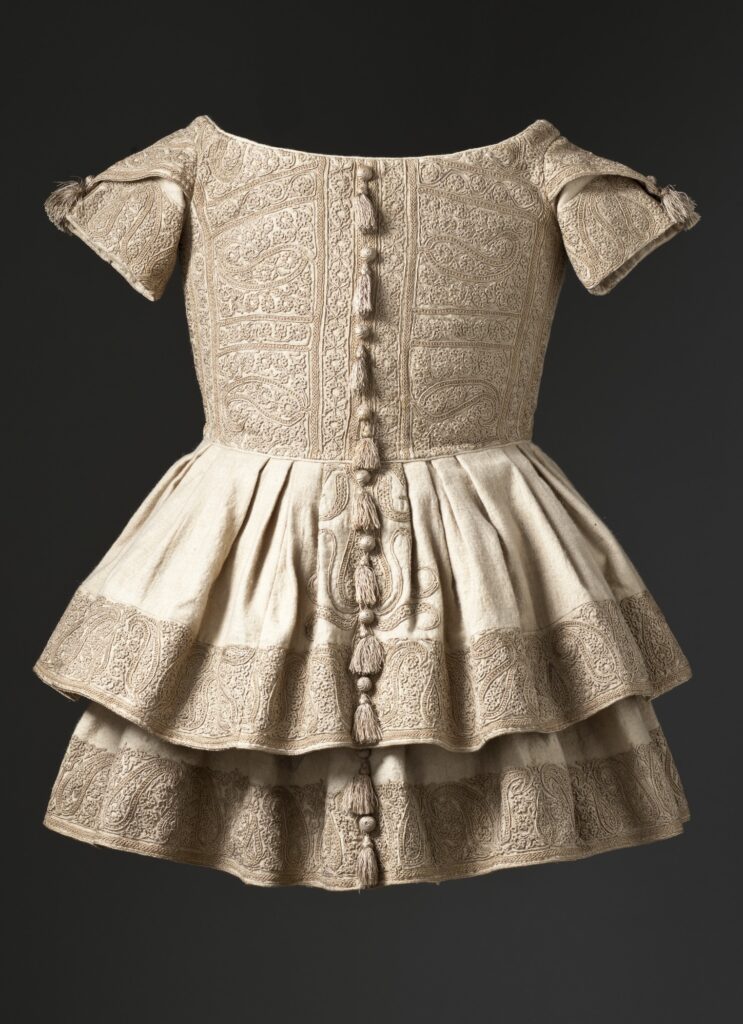When we mention cashmere, elegance and luxury are among the first associations that come to mind. This fine animal fiber is obtained from the short, soft hairs of mountain goats and is known as one of the most expensive fibers in the world. Various breeds of cashmere goats, named after the Kashmir region in northwest India, inhabit the mountainous areas of Asia, primarily in Mongolia, China, India, Nepal, and Bhutan. The Kashmir region is also associated with the production of cashmere shawls, which played a significant role in European fashion in the 19th century. They were made from the wool of a specific type of cashmere goat known as pashmina.
Cashmere is highly sought after in the world of fashion. Warm, comfortable, and lightweight cashmere fabrics are exceptionally pleasant to wear, with excellent drape and a soft texture. Due to its fineness, cashmere requires careful maintenance. At the same time, it is a very limited resource: one cashmere goat can produce around 200 grams of fiber annually, meaning that crafting a single sweater requires the fiber from several sheep. The history of cashmere production spans centuries, and today, China and Mongolia are the leading producers.
Modern cashmere clothing draws attention with its simple, classic lines and high craftsmanship standards. Cashmere is most commonly used to make elegant coats, suits, and high-quality knitwear. Since the mid-20th century, cashmere sweaters have become one of the most popular cashmere fashion items. Soft, comfortable, and warm, they are available in various colors and styles, making them suitable for various occasions. It’s important to note that genuine cashmere quality comes with a corresponding price tag.
Numerous cashmere shawls, wraps, coats, sweaters, and other clothing items are preserved in museum collections worldwide, bearing witness to luxury, style, elegance, and enduring fashion trends. In the collection of the Los Angeles County Museum of Art (LACMA), an interesting cashmere item is preserved: a little boy’s dress adorned with silk embroidery and tassels, made in Kashmir for the Western market around 1855. Throughout the 19th and early 20th centuries, such dresses made of various materials were common attire for very young boys up to the age of four, and they can be seen in family photographs of Serbian bourgeoisie from the late 19th and early 20th centuries.
Cashmere clothing was a recognizable part of the wardrobe of Queen Elizabeth II. Cashmere coats and cardigans held a special place among the queen’s attire, and it is known that she loved to wear cashmere sweaters from the famous Scottish brand Pringle, which has held the title of a Royal Warrant holder since 1956. Another well-known cashmere clothing manufacturer, Ballantyne, was awarded the Queen’s Award for Enterprise in 1967. Princess Grace of Monaco also adored wearing Pringle sweaters.
The “King of Cashmere,” Brunello Cucinelli, is favored by Prince William of Wales and actor Daniel Craig. Prince William posed in Cucinelli’s sweater in one of his official engagement photos, while Craig wore Cucinelli clothing even in his role as British secret agent James Bond in the films “Spectre” and “No Time to Die.” Luxury and high-quality cashmere clothing brands include Bramani Cashmere, Loro Piana, and Malo.
Wearing cashmere clothing is a sign of refined taste and style. Whether dressed up for a night out, a business meeting, or everyday activities, cashmere adds an elegant touch to any outfit, making us feel confident, comfortable, and chic.
Draginja Maskareli
Museum advisor – Art and Fashion Historian
Images:
Cashmere Goats; photo: Wikimedia Commons / CC BY-SA 4.0 / Ishana Verma
Cashmere Coat, fashion illustration, 1830s, G. & C. Franke collection; photo: Wikimedia Commons / public domain
Little Boy’s Dress, Kashmir, circa 1855, Los Angeles County Museum of Art (LACMA); photo: Wikimedia Commons / public domain
Queen Elizabeth II with Family, Illustrated Politics, Belgrade, October 17, 1972; photo: Wikimedia Commons / public domain
Queen Elizabeth II, Queen Mother, and Princess Beatrice, Balmoral, 1988, National Archives of New Zealand; photo: Wikimedia Commons / CC BY 2.0








